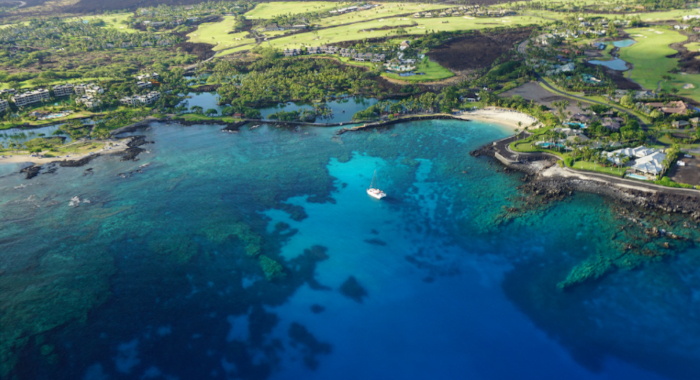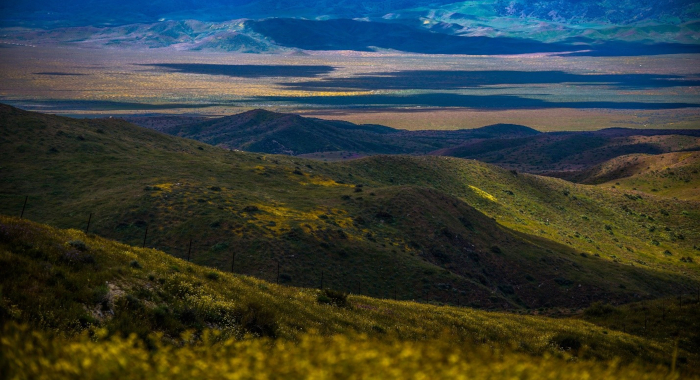There are many and increasing threats to biodiversity. To protect the plants and animals that share our world, we need to understand what they need to survive – and ideally, thrive – in a warming, more crowded world. And we need to better understand how meeting those needs can align with other societal values.
To do that, our scientists conduct ecological research to elucidate conservation problems, test hypotheses and solutions, and monitor results. We collaborate with the scientific community to inform and review our work, and share our findings with scientists and conservation practitioners around the world.


Maria C Viteri, Mary Allison Stegner, Elizabeth A. Hadly
Biodiversity monitoring is a core part of conservation practice, however all sampling methods include biases. In particular, small mammal live-trapping, the field standard, produces highly skewed…Eric D. Stein, Julie Zimmerman, Sarah M. Yarnell, Bronwen Stanford, Belize Lane, Kristine T. Taniguchi-Quan, Alyssa Obester, Theodore E. Grantham, Robert A. Lusardi, Samuel Sandoval-Solis
The first step to protecting rivers is figuring out how much water they need to protect species and ecological functions - known as ecological flow criteria. Scientists have struggled to develop flow…Kelsey Jessup, Sophie S. Parker, John M. Randall, Brian S. Cohen, Rowan Roderick-Jones, Shona Ganguly, Jill Sourial
This paper presents results from Planting Stormwater Solutions, part of TNC’s Urban Conservation work in Los Angeles. The authors develop a methodology to prioritize siting of vegetated…S. L. Hamilton, V. R. Saccomanno, W. N. Heady, A. L. Gehman, S. I. Lonhart, R. Beas-Luna, F. T. Francis, L. Lee, L. Rogers-Bennett, A. K. Salomon and S. A. Gravem
The sunflower sea star (Pycnopodia helianthoides) is an important mesopredator in kelp forest ecosystems that was devastated by the outbreak of sea star wasting disease (SSWD). This study quantifies…P. Manley, K. Wilson, N. Povak
The Framework for Resilience offers a shared vision for resilience that recognizes the interdependent nature of social and ecological values. These values are described by ten pillars that represent…Kristen Wilson, Dale W. Johnson, Douglas F. Ryan, ed.
Authored by TNC staff and colleague, Chapter 8 of this report synthesizes environmental monitoring and studies performed at Sagehen Experimental Forest that are relevant to water quality regulatory…Charlotte Stanley, Alyssa Mann, Walter Heady
The United States operates thousands of military installations in the U.S. and worldwide, worth about $1.2 trillion. These facilities are where personnel train and test weaponry, with…Walter Heady, Alyssa Mann, Stacey Solie, Bob Battalio, James Jackson, Kendall Lousen, and Bob Barnes
The U.S. Congress and the Department of Defense (DoD) have determined that climate change is a threat to national security and have required military installations to develop plans to improve the…Alyssa Mann, Walter Heady, Charlotte Stanley
TNC and the United States Navy partnered together to prepare for the impacts of climate change on Naval Base Ventura County (NBVC), Point Mugu in California. NBVC is a critical and strategic asset of…Christopher Dillis, Van Butsic, Jennifer Carah, Samuel Zipper, Theodore Grantham
Water management practices for cannabis farming in California are not well understood. This study examined permit reporting data and found that the vast majority (>75%) of permitted cannabis farms…Elizabeth S. Forbes, Peter S. Alagona, Andrea J. Adams, Sarah E. Anderson, Kevin C.Brown, Jolie Colby, Scott D. Cooper, Sean M. Denny, Elizabeth H.T. Hiroyasu, Robert Heilmayr, Bruce E. Kendall, Jennifer A. Martin, Molly Hardesty-Moore, Alexis M. Mychajliw, Brian P. Tyrrell, Zoë S.Welch
Species reintroductions in a changing world are difficult and highly uncertain. This paper introduces a framework to assess habitat suitability using historic, geographic, and taxonomic analogies to…Barton H. Thompson, Jr., Melissa M. Rohde, Jeanette K. Howard, Sandi Matsumoto
In 2014, California’s landmark Sustainable Groundwater Management Act (SGMA) promised comprehensive management of California’s groundwater. This report, Mind the Gaps: The Case for Truly…Christopher Dillis, Eric Biber, Hekia Bodwitch, Van Butsic, Jennifer Carah, Phoebe Parker-Shames, Michael Polson, and Theodore Grantham
This study used permitting and GIS data to explore geographic characteristics of legal cannabis farms in California. The study found two divergent paths of development - one characterized by numerous,…Mary G. Gleason, Jennifer E. Caselle, Walter N. Heady, Vienna R. Saccomanno, Julie Zimmerman, Tristin Anoush McHugh, Norah Eddy
Global kelp forests are biodiverse and productive nearshore ecosystems that provide a wide range of ecosystem services, but they are at risk from both local stressors and global drivers of kelp loss.…Robert I. McDonald, Tanushree Biswas, Cedilla Sachar, Ian Housman, Timothy M. Boucher, Deborah Balk, David Nowak, Erica Spotswood, Charlotte K. Stanley, Stefan Leyk
Urban tree cover provides benefits to human health and well-being, but it is often inequitably distributed. In this study, researchers Google Earth Engine (GEE) and an automated machine learning…Lyall Bellquist, Vienna Saccomanno, Brice X. Semmens, Mary Gleason, Jono Wilson
The health of ocean ecosystems is critical to maintaining natural biodiversity and sustainable fisheries, but federally-declared fishery disasters are reflecting devastating impacts to ecosystems,…Alyssa E. Semerdjian, H. Scott Butterfield, Robert Stafford, Michael F. Westphal, William T. Bean
This paper in the Journal of Wildlife Management combines nearly 20 years of remote sensing, field/trapping, and modeling data to develop a new approach to the identification and prioritization of…Jono R Wilson, Darcy Bradley, Kristina Phipps, Mary G Gleason
Overfishing threatens the health and resilience of the ocean. In response, the global conservation community has set ambitious targets for protecting biodiversity inside no-take marine reserves. Yet…Serena Lomonico, Mary G Gleason, Jono R Wilson, Darcy Bradley, Kate Kauer, Richard J Bell, Thomas Dempsey
Climate change poses unprecedented challenges to the sustainable management of wild capture fisheries. Management systems that improve the flow of information so that actionable steps can be taken are…Eric Gilman, Michael Musyl, Petri Suuronen, Milani Chaloupka, Saeid Gorgin, Jono Wilson, Brandon Kuczenski
More than 4.5 million fishing vessels deploy fishing gear in the ocean every year. A significant amount of these nets, traps, lines, and floats are abandoned, lost, or discarded, threatening the…